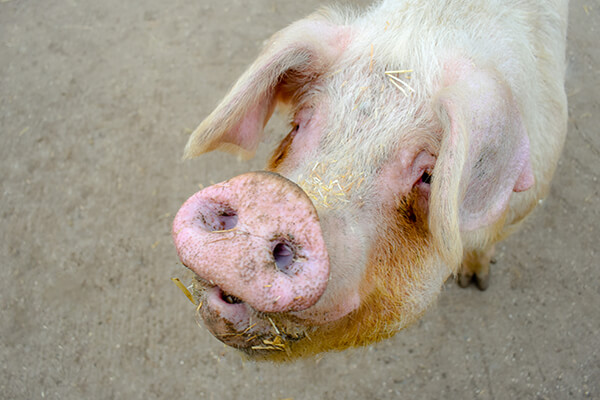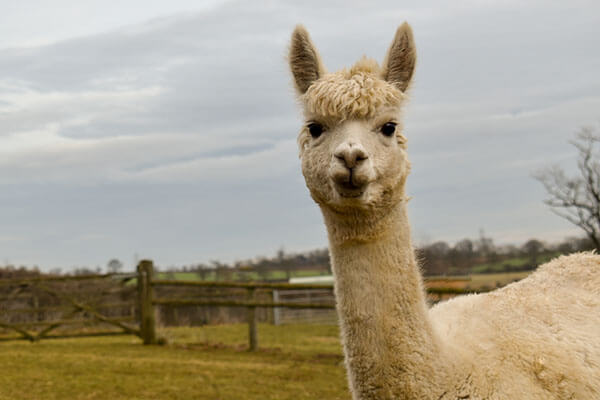Our Animals
Meet our rare breed animals
Old British farm animals are part of our country’s natural heritage.
Over the years different breeds of livestock, such as pigs and sheep, have been combined to create hybrid breeds that excel at producing a particular type or quality of meat. This means that working farms are less likely to keep the original, ‘multi-purpose’ breeds. Their numbers have significantly reduced and some no longer exist.
Sacrewell are keen to support and showcase old breeds of farm animal helping to preserve our farming heritage. Our visitors also have the opportunity to learn about and understand our ancestors’ farming experience through these wonderful breeds.
Sheep
Boreray sheep
The Boreray is a small and extremely rare breed of sheep whose hardy ancestors originated from the tiny Boreray island, part of the St Kilda group of islands off the north east coast of Scotland.
Most are cream coloured with a grey or black and white face and legs. Males and females have horns – rams have heavy, spiralled horns.
History: It’s thought the breed originated in the late 19th century. When the inhabitants of St Kilda were evacuated in 1930 they brought livestock with them. The sheep you meet at Sacrewell are the descendants of six sheep that were brought across to the mainland in the 1970s.
Fascinating fact: The Boreray is unique as the only remaining descendant of the now extinct, Scottish Tan Face breed.
Hill Radnor sheep
This is a large breed of sheep with a thick white fleece and a distinctive brown face. You can spot the rams as they have horns. As the name suggests, these hardy sheep originated from the hills in mid-Wales.
History: These sheep are thought to be typical of the old Welsh tan-faced sheep that used to roam the hills. Today there are very few flocks outside of Wales.
Fascinating fact: Numbers of Hill Radnor sheep were depleted by the Foot and Mouth outbreak in 2001 which particularly affected animals kept on the Welsh and English borders.

Pigs
British Landrace pig
The Landrace is a large white pig with heavy drooping ears. Although numbers have fallen in recent years, they are one of the UK’s most popular breeds of pig. Sows can produce and rear large litters of piglets.
History: The ancestors of our Landrace pigs were first imported into Britain from Sweden in 1949. They are prized for their high lean meat content, ideal for pork or bacon and have been used to ‘improve’ other breeds of pig by creating hybrids.
Fascinating fact: In 1955, farmers were advised to focus on just three pig breeds, the Large White, the Welsh and the British Landrace, in order to increase profitability. This resulted in the decline of many of our country’s other native breeds.
Goats
English goat
The English goat is a hardy and gentle creature that thrives in the British climate. They are brown or dark grey with patches of white on their coats. Look out for the dark line which runs along their backs.
History: The breed dates back to Georgian times. They are popular with smallholders as they are capable of providing a good amount of milk.
Fascinating fact: The downy winter undercoat of the English Goat is known as ‘cashmere’ and is incredibly soft.

Horses
Suffolk Punch
The Suffolk Punch is a large sturdy horse which is always chestnut in colour. Unlike other breeds of heavy horse, the hair on their legs is smooth meaning they were able to work in the fields without picking up too much mud.
History: There were many thousands of Suffolks throughout East Anglia before the First World War as their strength made them ideally suited for working the land or carting goods. They were replaced by agricultural machinery as it became mechanised, and their numbers rapidly declined. In 1966 only nine Suffolk foals were registered.
Fascinating fact: The Suffolk Punch is the oldest breed of heavy horse.
Cows
Dexter
Dexter cattle are the small breed of native cattle in the UK – they’re only about half the size of a typical milking cow. They are mainly black in colour but can also be red and dun.
History: Dexters originated in Ireland and can be traced back to a Mr Dexter in County Tipperary.
Fascinating fact: They were a rare breed until recently, but the good news is that they are now considered a ‘recovering’ breed as their popularity has grown in recent years.
Animals and birds to spot at Sacrewell

Alpacas
Alpacas are indigenous to South America and, just like sheep, alpacas are primarily kept for their fleeces. Listen out for the soft humming sound they often make when communicating with each other.
Goats
In addition to the traditional English Goat we also have the miniature classic pygmy goats and boer goats. The gentle giants of the goat world.
Equines
Sacrewell is also home to Shetland ponies, Falabella horses and a donkey.
Peacocks
You won’t be able to miss these characters at Sacrewell. The males are best-known for fanning out their extravagant plumage and making piercing calls. The ancestors of these stunning birds originated from the Asian continent.
Small furries
The rabbits and guinea pigs are a must-see for small children. There are lionhead rabbits, rex rabbits and mini lops to meet.



